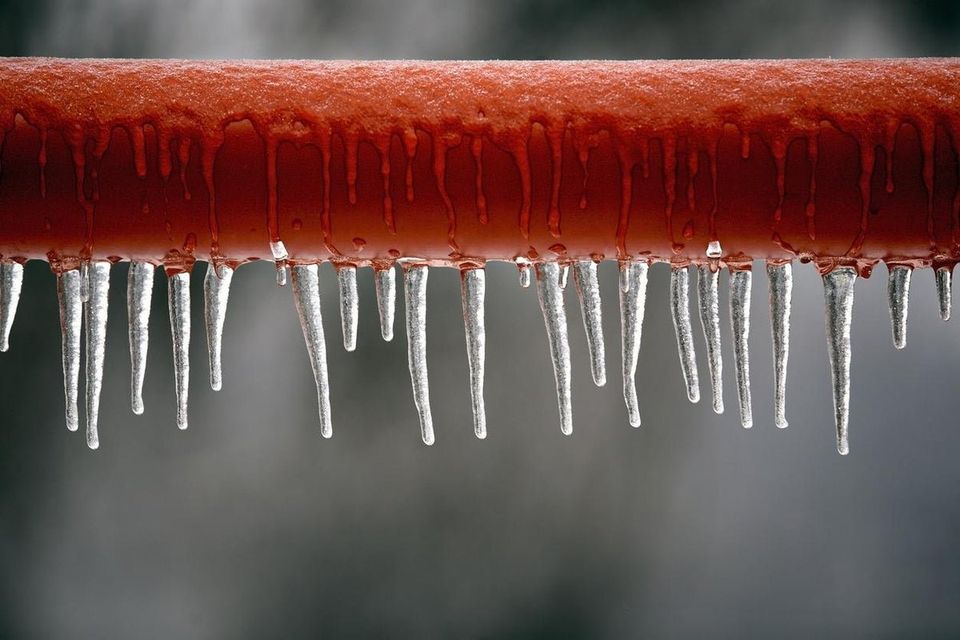Protecting Against Frozen Plumbing in Winter: Professional Advice
Protecting Against Frozen Plumbing in Winter: Professional Advice
Blog Article
The article underneath on the subject of Preventing and dealing with frozen pipes is exceptionally compelling. Check it out for yourself and decide what you think of it.

Winter can ruin your plumbing, specifically by freezing pipes. Below's how to avoid it from taking place and what to do if it does.
Introduction
As temperatures decline, the risk of icy pipelines rises, potentially leading to expensive repair work and water damage. Understanding how to avoid icy pipelines is important for house owners in chilly climates.
Recognizing Frozen Pipes
What creates pipes to freeze?
Pipes freeze when revealed to temperatures listed below 32 ° F (0 ° C) for prolonged durations. As water inside the pipelines freezes, it increases, putting pressure on the pipeline walls and potentially triggering them to break.
Threats and problems
Icy pipes can bring about water supply disturbances, residential property damages, and pricey repair work. Burst pipelines can flooding homes and cause comprehensive structural damages.
Signs of Frozen Pipeline
Identifying icy pipes early can prevent them from rupturing.
Exactly how to determine icy pipelines
Look for decreased water circulation from taps, unusual smells or sounds from pipelines, and noticeable frost on exposed pipelines.
Avoidance Tips
Insulating at risk pipelines
Wrap pipelines in insulation sleeves or use warm tape to secure them from freezing temperature levels. Focus on pipes in unheated or outside areas of the home.
Heating methods
Maintain indoor spaces properly heated, especially areas with plumbing. Open up cabinet doors to enable warm air to circulate around pipes under sinks.
Safeguarding Outside Plumbing
Garden tubes and exterior taps
Separate and drain garden hoses prior to winter. Install frost-proof faucets or cover outside faucets with insulated caps.
What to Do If Your Pipelines Freeze
Immediate actions to take
If you think frozen pipelines, keep faucets open to alleviate pressure as the ice melts. Use a hairdryer or towels taken in warm water to thaw pipes gradually.
Long-Term Solutions
Architectural modifications
Consider rerouting pipelines away from outside wall surfaces or unheated areas. Include added insulation to attics, basements, and crawl spaces.
Upgrading insulation
Purchase top notch insulation for pipelines, attic rooms, and wall surfaces. Proper insulation assists preserve consistent temperature levels and minimizes the danger of frozen pipelines.
Verdict
Preventing frozen pipelines calls for proactive procedures and fast responses. By comprehending the reasons, indicators, and safety nets, homeowners can safeguard their pipes during cold weather.
5 Ways to Prevent Frozen Pipes
Drain Outdoor Faucets and Disconnect Hoses
First, close the shut-off valve that controls the flow of water in the pipe to your outdoor faucet. Then, head outside to disconnect and drain your hose and open the outdoor faucet to allow the water to completely drain out of the line. Turn off the faucet when done. Finally, head back to the shut-off valve and drain the remaining water inside the pipe into a bucket or container. Additionally, if you have a home irrigation system, you should consider hiring an expert to clear the system of water each year.
Insulate Pipes
One of the best and most cost-effective methods for preventing frozen water pipes is to wrap your pipes with insulation. This is especially important for areas in your home that aren’t exposed to heat, such as an attic. We suggest using foam sleeves, which can typically be found at your local hardware store.
Keep Heat Running at 65
Your pipes are located inside your walls, and the temperature there is much colder than the rest of the house. To prevent your pipes from freezing, The Insurance Information Institute suggests that you keep your home heated to at least 65 degrees, even when traveling. You may want to invest in smart devices that can keep an eye on the temperature in your home while you’re away.
Leave Water Dripping
Moving water — even a small trickle — can prevent ice from forming inside your pipes. When freezing temps are imminent, start a drip of water from all faucets that serve exposed pipes. Leaving a few faucets running will also help relieve pressure inside the pipes and help prevent a rupture if the water inside freezes.
Open Cupboard Doors
Warm your kitchen and bathroom pipes by opening cupboards and vanities. You should also leave your interior doors ajar to help warm air circulate evenly throughout your home.

Hopefully you liked our piece about How to Prevent Your Pipes From Freezing. Thanks a lot for spending some time to read our posting. For those who appreciated our post kindly make sure you remember to pass it around. We truly appreciate your readership.
Visit My Web Page Report this page